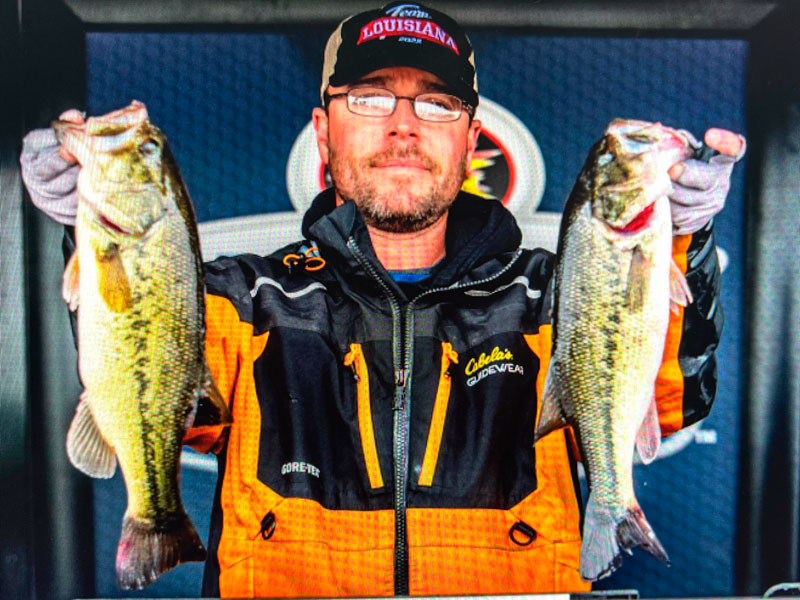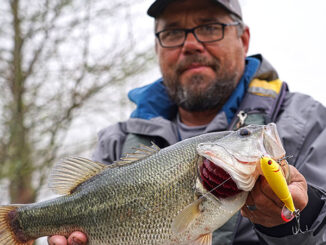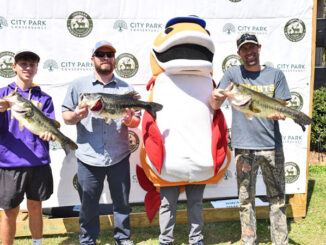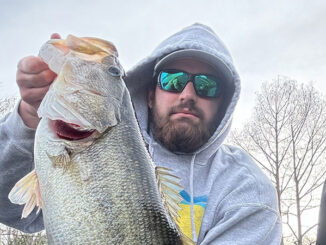
When crickets chirp and cicadas hum in the middle of the summer, an accomplished Gonzales bass angler knows where he’s going to fish and catch bass in July.
Tim Carmouche heads for the Atchafalaya Basin, the nation’s last great overflow swamp, and much of the time makes most of his casts along Big Pigeon in the Bayou Pigeon system east of the Atchafalaya River.
“July’s a tough time of year once the water (temperature) gets up. It pushes 90 (degrees) by that time,” Carmouche said a few weeks after he qualified for the 2022 B.A.S.S. Nation National Championship at Tennessee’s Pickwick Lake.
Carmouche, 41, was the highest-finishing Boater Division angler from Louisiana May 4-6 in the TNT Fireworks B.A.S.S. Nation Central Regional at Grand Lake in Oklahoma. If it wouldn’t have been for a dead fish in his five-bass limit on Day 3, he would have won the regional title outright.
He has shaken that setback off and is honing his considerable skills with some bass fishing in the Atchafalaya Basin, which has been his go-to place for bassin’ every summer since he was a kid.
“I’d much rather be in the Basin that time of year,” he said, noting he fishes the Stephensville side of the East Atchafalaya Basin Protection Levee. “The fish are going to be current-related, feeding on crawfish and bream.”
Favorite stretch
His favorite stretch is the Big Pigeon area, he said, generally the stretch on the lower end closer to Grand Lake. He’ll look for moving water, even if it’s caused by wind, and fish accordingly.
Carmouche, a production specialist who has worked 19 years at the Shell Geismar Chemical Plant, likes fishing that area because there are cypress trees in deep water and shallow water, deadfalls in the same areas and vegetation in various depths.
Mostly, he taps the bass population by punching hyacinths “90 percent of the time” with a Reaction Innovations California 420 Sweet Beaver. The key is to find the hyacinths in deeper water than the rest of the area, whether that “deeper” water is 3 feet or 12 feet.
“I don’t let the bait go all the way to the bottom. I’ll pitch it in there and just hold it, make it look like a bream” by shaking it up and down against the bottom of the mat, he said. He fishes it under a 1 ¼ or 1 ½-ounce weight most of the time (1 ounce if the vegetation’s “thin”) and on 65-pound test Suffix braided line spooled on a Shimano Metanium on a 7-foot-7 G. Loomis NRX fishing rod.
He also fishes a lot this time of year with Texas-rigged Zoom Speed Craws and Zoom Baby Brush Hogs. His other favorites are a 3/8-ounce black/black blade Lunker Lure or a chartreuse/white Lunker Lure with a gold blade around cypress trees and hyacinths, or a ¼-ounce white Outcast swim jig with a single tail pearl white jig trailer from Fat Albert.
If those don’t trigger bites, he’ll offer a black/chartreuse or green copperhead shad Lucky Craft 1.5 or a dark-colored KVD 1.0.
His best tip?
“We pay attention to bluegill bites,” he said. “It’s a struggle if we’re not getting bluegill bites. If we go 30 minutes without a bluegill bite we’ll pick up and go somewhere else.”


